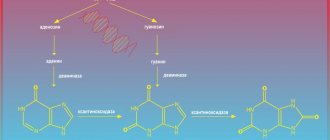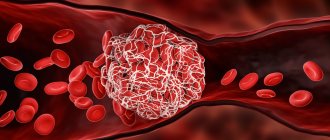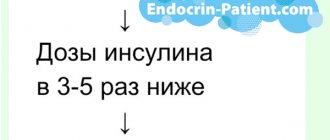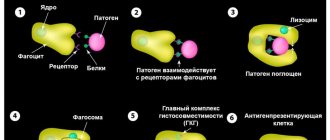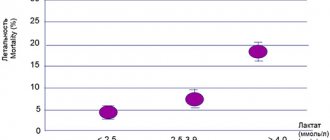AST and ALT
Tests for AST and ALT are two studies that are often prescribed by a doctor in combination. Why is it so important to measure the levels of these two enzymes at the same time? The idea of the information content of their relationship was first put forward by scientist Fernando De Ritis from Italy. He used the method for the differential diagnosis of hepatitis of various types. Since then, his name has become a household name. The Ritis coefficient shows the ratio of AST and ALT activity. In healthy people, the coefficient is 0.91-1.75. The indicator is informative only if the values of these enzymes exceed the reference values. If in a double test only the AST values are exceeded, this means that the myocardium is damaged. When the heart muscle is damaged, the AST level increases 8-10 times, ALT - only 1.5-2 times. If a patient has a liver problem, on the contrary, the ALT level increases 8-10 times, and AST values only 2-4 times.
How to lower AST in the blood?
People who are looking for an answer to a similar question need to clearly understand: an increase in AST is not an independent disease and therefore there are no separate measures to reduce it!
Since this sign signals the destruction of cells containing this enzyme (heart, liver, muscles), it is necessary to diagnose and treat diseases of these organs. Only healthy tissues will be able to function normally and bring all indicators of a biochemical blood test, including AST, back to normal.
It is necessary to clearly understand that an increase in AST is not the cause of the disease. This is its consequence. Therefore, only the elimination of the causative disease can interrupt the cause-and-effect relationship, which will be reflected in the normalization of AST activity and will become a criterion for victory over this disease. Any cases of increased aspartate aminotransferase are a reason to seek specialized medical help. This harmless and asymptomatic sign often hides serious chronic diseases that will only manifest themselves after some time.
Author of the article:
Mochalov Pavel Alexandrovich |
Doctor of Medical Sciences therapist Education: Moscow Medical Institute named after. I. M. Sechenov, specialty - “General Medicine” in 1991, in 1993 “Occupational diseases”, in 1996 “Therapy”. Our authors
What is an enzyme
AST or AST is a protein synthesized inside the cells of the human body. Its highest concentrations are observed in the tissues of the myocardium, muscles and liver. To a lesser extent, the enzyme is present in the kidneys, pancreas, cells of the central nervous system and brain. It is encoded by the GOT 1 and GOT 2 genes. In a healthy person, the level of the enzyme is quite low. Its active release into the blood begins when the heart muscle ruptures, as well as liver destruction as a result of hepatitis, cirrhosis or cancer. The enzyme is important because it contains vitamin B6, which is involved in amino acid metabolism and, accordingly, the synthesis of insulin. In tests, the indicator is measured in units per liter of blood.
Complexes with this research
Biochemistry of blood.
13 indicators Optimal biochemical blood test RUR 3,490 Composition Male check-up No. 1 39 studies for annual preventive examination RUR 18,570 Composition
Check-up No. 1 for children and adolescents Annual preventive examination program RUB 10,950 Composition
IN OTHER COMPLEXES
- Advanced male anti-aging diagnostics RUB 33,710
- Examination during pregnancy. 3rd trimester 9,620 RUR
- Female infertility RUB 16,210
- Biomarkers of liver functional capacity. Extended examination RUB 3,900
- Preventive check-up RUB 11,960
Range of application of AST analysis
- In cardiology as a marker of myocardial infarction. In the heart muscle the enzyme is more than 10,000 times more active than in the blood. During a heart attack, intense release of the enzyme occurs.
- For liver pathologies. Diseases such as hepatitis and cirrhosis are certainly accompanied by the destruction of liver tissue and a sharp jump in AST values.
- For chronic alcoholism.
- In obstetrics and gynecology. During pregnancy, a woman may experience a slight increase in AST values. This is explained by the effect of the growing fetus on the mother's liver. In the first trimester, its values should not exceed 31 U/l, in the second and third – 30 U/l.
- In endocrinology for diabetes and/or excess weight.
Reasons for increased AST
Detection of an increase in AST, especially repeated, may indicate the following diseases:
- Acute myocardial infarction in the initial phases of its development. Based on the dynamics of the indicator, one can judge its extensiveness and recovery period;
- Closed and open heart injuries;
- Myocarditis of autoimmune or infectious origin;
- Acute and chronic viral hepatitis;
- Toxic liver damage from hepatotoxic poisons and drugs;
- Fatty and alcoholic hepatosis;
- Endogenous intoxications against the background of infectious and purulent-septic diseases of internal organs and soft tissues;
- Severe chronic heart failure;
- Cholestasis caused by a mechanical obstruction in the bile ducts (stones, tumors, congenital anomalies);
- Impaired hepatic blood flow and portal hypertension;
- Cirrhosis of the liver with preservation of intact areas of this organ. In decompensated cirrhosis, the enzymatic activity of plasma in relation to AST decreases due to the complete replacement of the liver with connective tissue;
- Metastases to the liver of malignant tumors;
- Primary cancer of the liver or bile ducts;
- Damage to the liver and heart in malignant forms of myeloblastic leukemia;
- Massive destruction of muscle tissue (myodystrophy, generalized myositis, crush syndrome, reperfusion syndrome against the background of restored blood flow in the ischemic limb;
Not every increase in AST should be perceived as a sign of cellular cytolysis. If the indicator is several units of measurement higher than normal values, this does not mean anything. An increase in AST two or more times higher than normal is of diagnostic significance.
In this regard we can talk about:
- Moderate increase (when AST increases five times);
- Average increase (when an increase in the indicator is recorded up to ten times higher than normal);
- Severe elevation (AST level is ten or more times higher than normal).
The main diagnostic value of AST is heart damage during a heart attack. The study is carried out dynamically with short time intervals (about an hour). Any changes in the indicator that exceed the norm, in doubtful cases, speak in favor of a heart attack!
How to prepare for analysis
To increase the reliability of the analysis, some rules and restrictions should be observed. So on the eve of the study, you should refrain from eating fatty and smoked foods, as well as confectionery. It is best if the test is performed on an empty stomach in the morning. When taking medications, you should consult your doctor about their possible withdrawal. The fact is that during a biochemical blood test, many medications can affect the results of the study. When treated with antidepressants, antibiotics, diuretics and other drugs, the test readings may be distorted. In addition, immediately before a visit to the treatment room, it is prohibited to perform ultrasound, x-ray examination and physiotherapy procedures.
Norm of AST in the blood
In order to correctly evaluate the obtained indicators of plasma enzymatic activity in relation to AST, you need to know its normal values. Most laboratories usually indicate the norm next to the result obtained. This is due to the fact that different reagents and methods can be used to determine the AST indicator. The types and standards given in the table are considered generally accepted.
| Determination method | Norm for men | Norm for women | Norm for children |
| Optical (in ME) | Up to 40-41 IU | Up to 34-35 IU | Up to 50 IU |
| Reitman-Frenkel reactions (in mcomol/(h/ml)) | 0,1-0,45 | 0,1-0,35 | 0,2-0,5 |
If a biochemical blood test yields AST values that do not exceed standard values, this indicates the normal functioning of the enzyme systems of the heart and liver and the preserved integrity of the cellular composition of these organs. If there are clinical symptoms of their damage, other specific markers (ALT, troponins, creatine phosphokinase, etc.) must be examined!
Decoding the analysis for AST
Normal for women
AST test values vary depending on age and gender. So in women the norm of the enzyme in the blood is 31 U/l. The older a person is, the lower his activity in the body. This is due to a slowdown in metabolism in general. A natural physiological state such as pregnancy also affects enzyme levels. During this period, there may be small jumps in both one and the other direction.
Normal for men
The concentration of the enzyme in men begins to exceed its amount in women starting from 12-17 years. Its higher concentrations are explained by the large volume of muscle tissue. At puberty, the AST norm in boys is about 29 U/l. This is about four units higher than girls at the same age. In an adult man, the enzyme level can reach 37 U/l.
What does the AST blood test mean?
AST, AST, AST or aspartate aminotransferase is the same concept, denoting one of the enzymes of protein metabolism in the body. This enzyme is responsible for the synthesis of amino acids that make up cell membranes and tissues. AST is not active in all organs. Moreover, this type of aminotransferases can be classified as specific enzymes, the excess activity of which indicates a fairly narrow range of pathological conditions. Most of AST is found in the myocardium (heart muscle), hepatocytes (liver tissue), neurons of the brain and muscle tissue of skeletal muscles. This is explained by a fairly high level of metabolic processes in them and the need for maximum cell adaptability to maintain its structure. This enzyme helps them with this.
As long as the structure of cells containing AST is not disturbed, the amount of this enzyme in the plasma is minimal and does not exceed normal limits. As soon as their integrity is disrupted, this leads to its excessive release into the systemic circulation. This phenomenon will be recorded in the form of a natural increase in AST activity. The dependence should be directly proportional: the more active the cytolysis, the higher the AST level. The time after the onset of cell destruction is important - the longer it is, the less enzyme activity in the plasma will be.
When prescribing a biochemical blood test, they imply an analysis of the enzymatic activity of the plasma, among other indicators of which AST is necessarily examined. This requires venous blood, which is obtained by puncture of one of the peripheral veins in the amount of 15-20 milliliters. Its centrifugation allows you to separate the plasma from the formed elements, which then lends itself to various chemical reactions. During their course, AST activity in the blood is determined.
An AST study allows you to determine the presence of cell destruction (cytolysis) of the myocardium or liver. If other organs are affected, this indicator does not increase. Very often it is prescribed not only to confirm damage to specific tissues, but to carry out differential diagnosis or exclude cardiac and liver pathologies!



